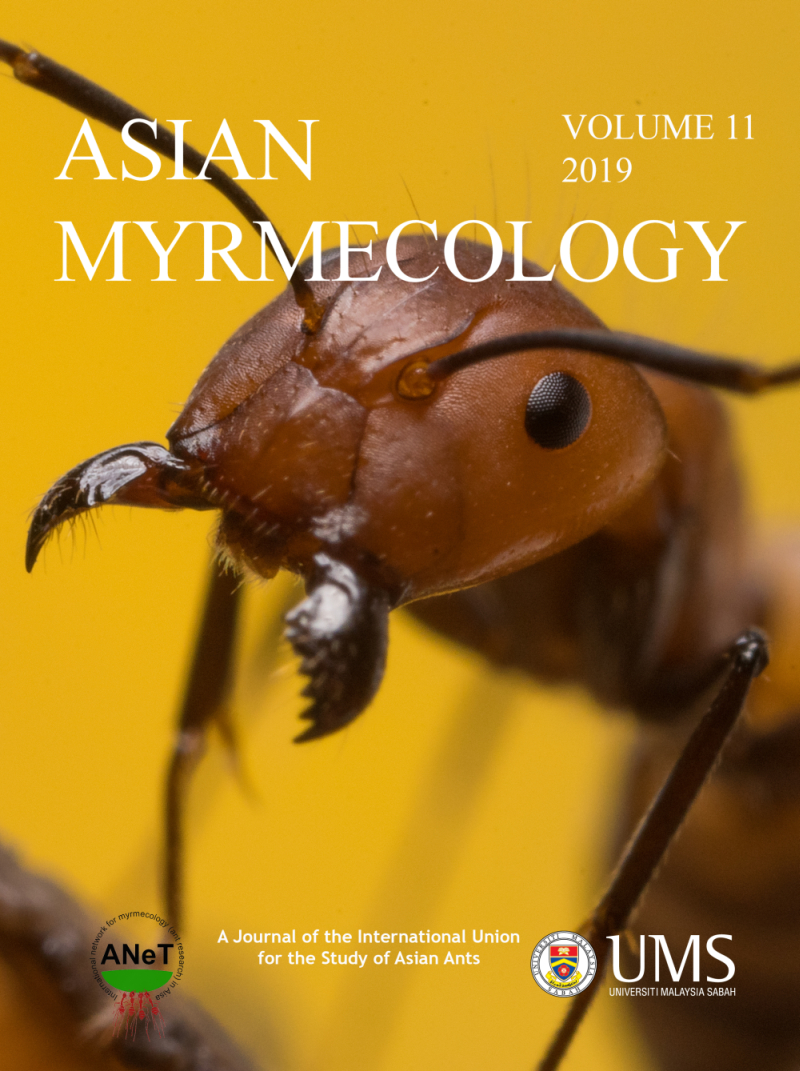ASIAN
MYRMECOLOGY
Image: François Brassard
Morphology
DOI: 10.20362/am.009006
Asian Myrmecology 9: e009011 (1-16)
article first published online 23/June/2017
The exocrine system of Aneuretus simoni (Formicidae, Aneuretinae)
JOHAN BILLEN*
Abstract:
This paper reviews the morphology of the 11 exocrine glands that we found in Aneuretus simoni workers. In comparison with their stingless sister group Dolichoderinae, the stinging A. simoni has a well-developed venom gland with long and slender secretory filaments. They also share the occurrence of Pavan’s gland as source of the trail pheromone, although this gland has a bilobed appearance in Aneuretus, while it only has one lobe in dolichoderine species. The intramandibular gland is well-developed, while the metapleural gland has the lowest number of secretory cells known in ant workers. All glands described occur in both minor and major workers, with sometimes clear differences between both worker castes. Major workers have larger propharyngeal glands, which can be understood by their presumed role in food storage in the colony, and also have metapleural glands with twice as many secretory cells than minor workers. Minor workers in turn have a more developed venom gland, which is in line with their higher activity in nest defence and prey capture.
Keywords:
Aneuretus simoni, Aneuretinae, exocrine glands, morphology, histology, ultrastructure
Get PDF (8.3MB):
Zoological Institute, University of Leuven, Naamsestraat 59, box 2466, B-3000 Leuven, Belgium
*Corresponding author: johan.billen@kuleuven.be



